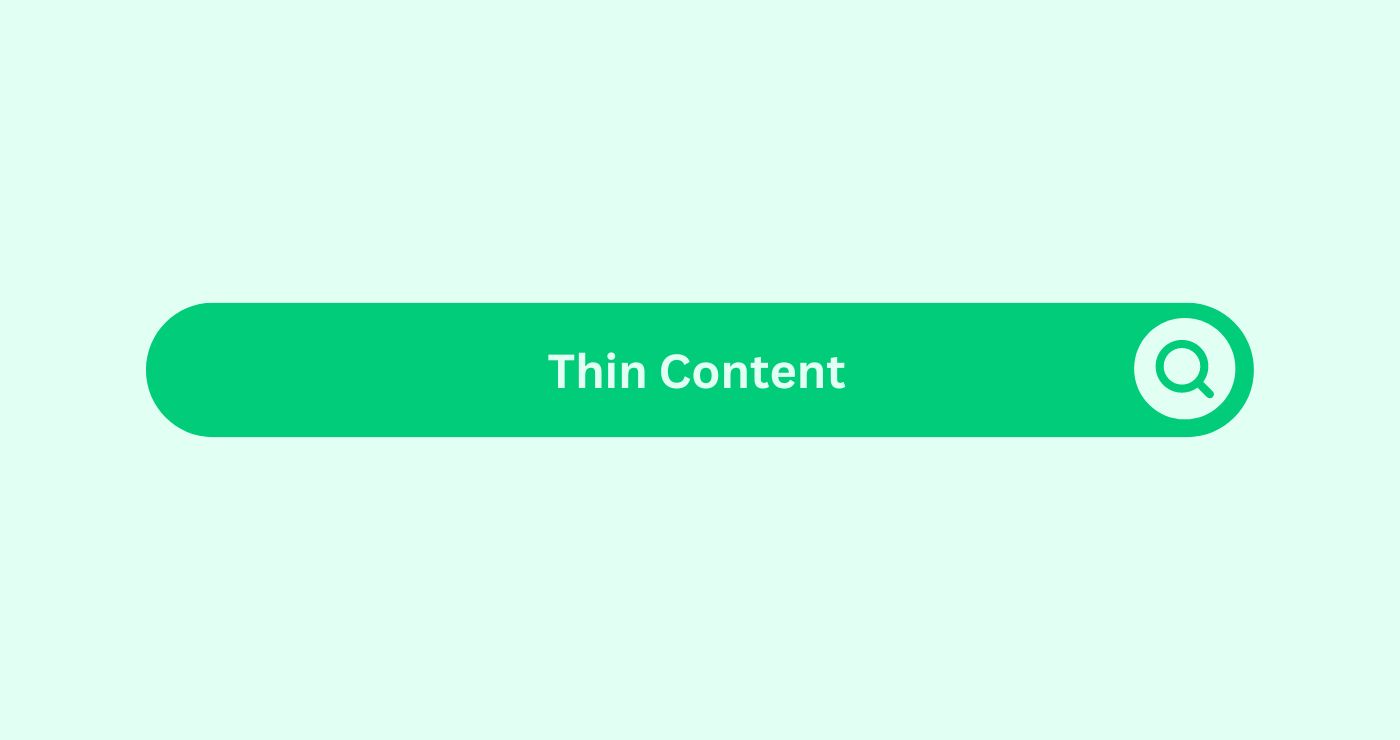Definition
Thin content refers to web pages that lack substantive or valuable content, often characterized by minimal text, low-quality content, or excessive use of advertisements. In the context of SEO (Search Engine Optimization), thin content pages provide little to no value to users and may result in poor user experience, reduced search engine rankings, and potential penalties from search engines. Thin content can include doorway pages, affiliate pages with little original content, or pages with duplicate contentDefinition Duplicate content in the SEO space refers to iden... More that offer little additional value to users.
How you can use Thin Content
Thin content should not be used in ethical SEO strategies. However, for illustrative purposes, suppose a website owner wants to quickly create multiple pages targeting specific keywordsWhat is the keyword in the context of content marketing? Key... More but lacks the resources to produce substantial content for each page. In that case, they might create thin content pages with minimal text and low-quality content in an attempt to increase their website’s visibility in search engine results. However, this approach is not recommended, as thin content can leadWhat is Lead? Definition A Lead in the context of SEO refers... More to poor user experience, reduced search engine rankings, and potential penalties from search engines. Instead, website owners should focus on creating high-quality, valuable content that meets the needs of their target audienceDefinition The term "Audience" refers to the group of indivi... More and provides genuine value.
Formula or Calculation
There is no specific formula or calculation for determining thin content. However, identifying thin content typically involves evaluating the quality, depth, and relevanceDefinition In SEO, relevance refers to the degree to which a... More of the content on a web page. Factors such as word count, uniqueness, readability, and engagementWhat is engagement in the context of content marketing? Enga... More metricsWhat are Metrics in the context of SEO? Metrics in SEO refer... More can be considered when assessing whether a page qualifies as thin content. Additionally, tools like Google Search ConsoleDefinition Google Search Console is a free web service from ... More and website crawlersDefinition Crawlers, also known as spiders or bots, are auto... More can help identify thin content pages by analyzing content quality and user engagementWhat is engagement in the context of content marketing? Enga... More metricsWhat are Metrics in the context of SEO? Metrics in SEO refer... More.
Key Takeaways
- Avoid creating thin content pages that lack substantive or valuable content for users.
- Focus on producing high-quality, original content that provides genuine value and meets the needs of your target audienceDefinition The term "Audience" refers to the group of indivi... More.
- Regularly audit your website for thin content pages and take corrective actions, such as improving content quality or consolidating similar pages.
- Prioritize user experience by ensuring that your website’s content is informative, engaging, and easy to navigate.
- Follow Google’s Webmaster GuidelinesDefinition Webmaster guidelines refer to a set of rules and ... More and best practices for content quality and relevanceDefinition In SEO, relevance refers to the degree to which a... More to avoid penalties and maintain search engine rankings.
FAQs
What is thin content, and why is it problematic for SEO?
Thin content refers to web pages with minimal or low-quality content that provides little value to users and may result in poor search engine rankings.
How can I identify thin content on my website?
You can identify thin content by evaluating factors such as word count, content uniqueness, engagementWhat is engagement in the context of content marketing? Enga... More metricsWhat are Metrics in the context of SEO? Metrics in SEO refer... More, and user feedback.
What are some examples of thin content pages?
Examples of thin content pages include doorway pages, affiliate pages with little original content, and pages with duplicate or scraped content
Definition Scraped content refers to the unauthorized co... More.
Can thin content pages negatively impact my website's search engine rankings?
Yes, thin content pages can result in reduced search engine rankings, a poor user experience, and potential penalties from search engines.
How can I improve thin content pages on my website?
You can improve thin content pages by adding more substantive and valuable content, optimizing for relevant keywordsWhat is the keyword in the context of content marketing? Key... More, and enhancing the user experience.
Is it better to remove thin content pages or improve them?
It depends on the specific circumstances. In some cases, improving thin content pages may be feasible and beneficial, while in other cases, removing them entirely may be the best option.
Can I use thin content pages for SEO purposes if they contain relevant keywords?
No, thin content pages with minimal or low-quality content should not be used for SEO purposes, as they provide little value to users and may result in penalties from search engines.
How often should I audit my website for thin content?
It's recommended to audit your website for thin content regularly, especially after significant updates or changes to your website's content.
Can I use automated content generation tools to create content for my website?
While automated content generation tools may be tempting, they often produce low-quality content that can be classified as thin content. It's best to focus on creating original, high-quality content manually.
What steps can I take to prevent thin content issues in the future?
To prevent thin content issues, focus on creating comprehensive, valuable content that meets the needs of your target audienceDefinition The term "Audience" refers to the group of indivi... More, and regularly monitor your website for thin content using tools and analyticsDefinition Analytics in the SEO context refers to the proces... More.




